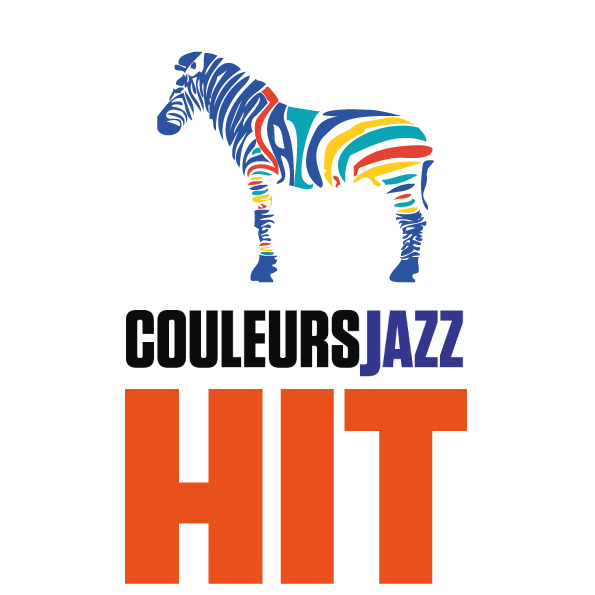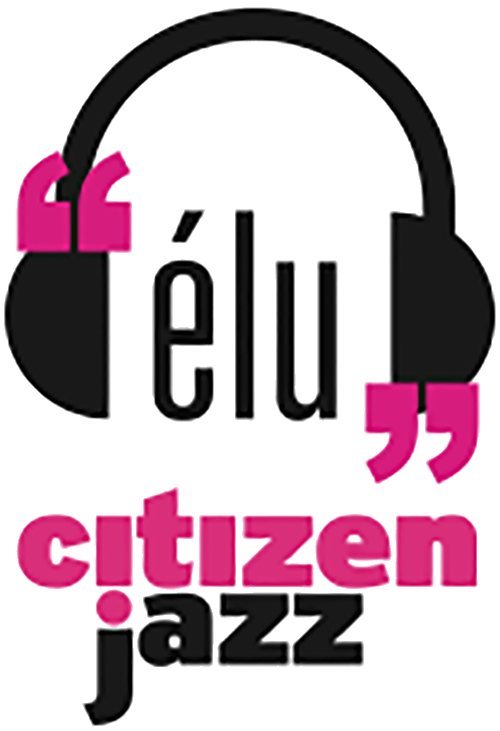Daniel Erdmann’s Velvet Revolution featuring Théo Ceccaldi & Jim Hart Won’t Put No Flag Out
As a musician and composer Daniel Erdmann developed a characteristic sound and an unmistakable idiom years ago. The warm, earthy timbre of his tenor sax and a wide-ranging expressiveness, from clear melodies to husky modulations and flickering abstractions, are the humus for the various flowers that drive Erdmann’s band projects...
Artists
Daniel Erdmann – tenor saxophone
Théo Ceccaldi – violin, viola
Jim Hart – vibraphone, percussion (11)
About the album
All compositions by Daniel Erdmann, except track 6 by Harold Arlen
Recorded by Viktor Szabó at BMC Studio, Budapest on 6-8 January, 2019
Mixed by Maikol Seminatore at The Border Studios, Bagnolet, France
Mastered by Marwan Danoun at Galaxy Studios, Mol, Belgium
Artwork: László Huszár / Greenroom
Produced by László Gőz
Label manager: Tamás Bognár
Supported by La Région Grand Est, DRAC Grand Est
Coproduced by Das Atelier, Reims, France
Reviews
Peter Slavid - londonjazznews.com (en)
Chris Baber - jazzviews.net (en)
Selwyn Harris - Jazzwise **** (en)
Pierre de Chocqueuse - couleursjazz.fr (HIT) (en)
Ian Patterson - allaboutjazz.com *** 1/2 (en)
Ken Waxman - JazzWord (en)
Jean-Jacques Birgé - mediapart.fr (fr)
Alex Dutilh - francemusique.fr (fr)
Louis-Julien Nicolaou - Télérama (fr) - fff
Pierre de Chocqueuse - blogdechoc.fr (fr)
Nicolas Dourlhès - Citizen Jazz (élu) (fr)
Ralf Dombrowski - JazzThing (de)
RD - Stereoplay (Jazz-CD des Monats) (de)
Christian Bakonyi - Concerto **** (de)
Ulfert Goeman - Jazz Podium (de)
Stefan Pieper - JazzThetik ***** (de)
Heinrich Brinkmöller-Becker - nrwjazz.net (de)
Wolfgang Giese - musikansich.de (de)
Jan Granlie - salt-peanuts.eu (dk)
Z. K. Slabý - His Voice (cz)
Patrick Španko - skJazz.sk ***** (sk)
Dionizy Piątkowski - jazz.pl (pl)
Matti Komulainen - Hifimaailma (fin)
Máté J. György - Gramofon **** (hu)
Olasz Sándor - Riff.hu (hu)
Komlós József JR - Alföldi Régió Magazin (hu)
Zipernovszky Kornél - Magyar Narancs (hu)
Daniel Erdmann’s Velvet Revolution featuring Théo Ceccaldi & Jim Hart: Won’t Put No Flag Out
The album is available in digital form at our retail partners
(find the original German text and a French translation below)
International jazz, particularly more recently, has produced many unusual formations. But you’d have to search high and low for a band like Velvet Revolution, and it’s quite likely nothing comparable can be found. Even on paper, this combination of saxophone, violin, and vibraphone seems bold. It holds a promise of chamber-music sensitivity and multifaceted timbres, and suggests tone colour, intimacy as well as dynamism, and expressive improvisations. Particularly when such experts as Daniel Erdmann, Théo Ceccaldi, and Jim Hart are at work, musicians who have all already made a mark for themselves in the jazz landscape of Europe.
The mere juxtaposition of two instruments that usually operate in opposing genres is beguiling in itself. Here is the saxophone, which thanks to American icons such as Charlie Parker, Sonny Rollins, John Coltrane, Ornette Coleman etc. is almost emblematic for jazz and stands for jazz’s at times politically charged desire for freedom. There is the violin or viola, which enjoys a similarly elevated status in classical music, but which in this context has relatively little room for improvisation. Placing a vibraphone between these two as a flexible link would appear to be an ingenious move as the vibraphone is able to place rhythmic and harmonic accents, sound transparent and floating, but can also provoke with insistent patterns, and intensify structures.
As a musician and composer Daniel Erdmann developed a characteristic sound and an unmistakable idiom years ago. The warm, earthy timbre of his tenor sax and a wide-ranging expressiveness, from clear melodies to husky modulations and flickering abstractions, are the humus for the various flowers that drive Erdmann’s band projects. He has already displayed an instinct for unusual, exciting formations many times. To start with, Velvet Revolution in 2015 was an idea of a sound; when it came to realizing it with a team, fate came to his aid.
Before Théo Ceccaldi was celebrated outside France as the new star of the jazz violin, he used to play in a café in Reims, where Erdmann had been based since 2010, and where he got talking to the young virtuoso after his concert. Ceccaldi, scion of a musical family and elder brother to a no less impressive cellist Valentin Ceccaldi, follows in the line of great French jazz violinists (Stéphane Grappelli, Jean-Luc Ponty, Didier Lockwood, Dominique Pifarély, Régis Huby). Like many musicians born in the 80s, Ceccaldi confidently crosses all boundaries of style. Melodic indulgence, classic and traditional motifs are obviously familiar to him, while at least as crucial to his playing is a richness of sound that verges on the onomatopoeic, oriented towards contemporary music. Unperturbed by convention, Ceccaldi strums rhythmic chords or percussive patterns as on a ukulele, with verve and zest, he paints repetitive miniatures and develops spectacular expressivity in broad soloistic arcs.
Erdmann met the British vibraphonist Jim Hart by chance (or was it destiny?) on Eurostar from London to Paris. During the trip, Hart told him about his plan to move to Colmar in Alsace. Originally a pianist and drummer, Hart began to focus more on the vibraphone in the late 90s. Most recently, he has travelled to Ghana, partly to work on West African rhythms and Balafon and Gyil traditions. The impressions he gathered there flicker behind many passages of the trio. For instance, in the mechanical distortion of the multilayered Give the Soul Some Rest. In this, the composer Erdmann allows an unorthodox imitation of a Bach chorale walk over a West African motif; the piece is dedicated to the maestro of the n’goni Moriba Koita from Mali, with whom Erdmann worked in Paris.
The name of the band, Velvet Revolution, is a nod to Daniel Erdmann’s political awareness, which he already allowed to come through in the trio Das Kapital and in the quartet with Samuel Rohrer, Vincent Courtois, and Frank Möbus. And now he shares it with Ceccaldi and Hart too. Velvet Revolution, originally the term for the non-violent coup in Czechoslovakia in 1989, here stands as a cipher for a musical departure, a stylistic renewal that by no means negates history, but unmistakably and highly convincingly creates an individual, progressive form. The subversive power of this musical idea comes by stealth rather than with brazen crowing, which allows it to be all the more sustainable. In Germany his 2016 debut album A Short Moment of Zero G garnered with two important awards: In addition to a jazz Echo it was also awarded the Annual Prize of German Record Critics.
To the question of whether his characteristic music could have been written if he didn’t live mostly in France, Daniel Erdmann has long ago answered with a clear No. This time he has actually composed for his two partners in the band and their personal sound. Thanks to the concerts of recent years all three of them interact much more intuitively, resulting in even greater individual freedom. Many details of the compositions were formulated jointly by the band, even in the studio. Additional impulses came from the temporary extension to the quartet Velvet Jungle, with Cyril Atef or Samuel Rohrer on drums and electronic equipment. The specially selected concerts of this line-up motivated the trio to intensify rhythmic qualities. While some pieces on his debut album were inspired by places and scenes in Paris, with Erdmann fixing impressions of them in a specific framework (“a particular colour as a title”), this time he dispenses with such formal requirements. Sometimes he ponders personal topics, as in Bring Me Moon, in other compositions he refers to film or literature, such as Kaurismäki’s Drifting Clouds, Lars von Trier’s Melancholia, and Robert Menasse’s novel Die Vertreibung aus der Hölle (The Expulsion from Hell). And while Erdmann’s husky saxophone sound at times seems to tap roots in blues, the numbers Justine, Again and Abstract Love Song are influenced by twentieth-century European art music.
Won’t Put No Flag Out is an album that combines compositional wit with personal expression, an immediately identifiable sound and attitude. As such, the German-French-British trio lives up to its name: Velvet Revolution.
Norbert Krampf
Translated by Richard Robinson
Booking Germany and worldwide: Tobias Schuster (info@shoestring-jazz.de) Booking France: Marion Piras (marionpiras@gmail.com)
Artist contact: info@dasatelier.org
Thanks to Anne Monteillet, Nicolas Dhondt, Olivier Lallement, Hélène Segal,
the Erdmanns, Vincent Courtois, Gunnar Gentzsch, Tobias Schuster, Norbert Krampf, Alban Lefranc, Philippe Ochem, Cyril Atef, Samuel Rohrer and Oli Mayne.
Daniel Erdmann plays Vandoren reeds, mouthpieces and ligatures.
Jim Hart plays Mike Balter mallets.
Deutsch
En français
De nombreuses formations inhabituelles ont vu le jour dans le jazz international, surtout ces dernières années. Mais on pourrait chercher longtemps en vain un groupe comme le Velvet Revolution. Sur le papier déjà, la combinaison du saxophone, du violon et du vibraphone est tout à fait passionnante. C’est la promesse d’une subtilité de musique de chambre et de timbres complexes, l’assurance d’une musique à la fois intime et dynamique pouvant aller jusqu’aux improvisations expressives. D’autant plus que sont à l’œuvre des maîtres comme Daniel Erdmann, Théo Ceccaldi et Jim Hart, qui chacun de leur côté ont posé de nouveaux jalons dans le paysage du jazz européen.Déjà, la simple rencontre de deux instruments qu’on entend généralement dans des genres opposés, est alléchante. D’un côté le saxophone qui, grâce à des icônes américaines comme Charlie Parker, Sonny Rollins, John Coltrane, Ornette Coleman, etc., est devenu presque le symbole du jazz et de son désir de liberté politique, au moins à certaines époques. De l’autre côté, le violon ou l’alto, qui jouit d’un statut tout aussi exceptionnel dans la musique classique, mais qui dans ce contexte a relativement moins de marge d’improvisation. Placer un vibraphone comme une articulation flexible entre ces deux éléments est une idée géniale. Pas seulement parce qu’il est fait de métal et de bois. Le vibraphone peut placer des accents rythmiques et harmoniques, produire des sons transparents et vibrants, mais il peut aussi, par ses motifs insistants, accentuer les structures avec une grande pertinence.En tant que musicien et compositeur, Daniel Erdmann a développé depuis des années un son caractéristique et un langage sonore singulier. Le timbre chaleureux et tellurique de son saxophone ténor et une grande variété dans l’expression, allant des mélodies claires aux modulations rauques et aux abstractions scintillantes, forment le terreau où fleurissent les différents projets de ses groupes. A plusieurs reprises, il a déjà fait preuve d’un instinct très juste pour réunir des formations insolites et passionnantes. C’est une certaine vision sonore qui a donné naissance au Velvet Revolution en 2015, et ce sont des coïncidences heureuses qui ont permis au groupe de se constituer.Avant même que Théo Ceccaldi ne soit célébré au-delà des frontières françaises comme la nouvelle star du violon jazz, il jouait dans un café de Reims, principale ville de résidence de Erdmann depuis 2010, où il a abordé le jeune virtuose après son concert. Ceccaldi, issu d’une famille de musiciens et frère aîné du tout aussi impressionnant violoncelliste Valentin Ceccaldi, rejoint la famille des grands violonistes de jazz français (Stéphane Grappelli, Jean-Luc Ponty, Didier Lockwood, Dominique Pifarély, Régis Huby). Comme beaucoup de musiciens nés dans les années 80, Ceccaldi franchit souverainement toutes les frontières stylistiques. La profusion mélodique, les motifs classiques et traditionnels lui sont bien sûr familiers, mais son jeu déploie aussi une palette sonore qui rappelle la musique contemporaine, et peut même aller jusqu’à l’onomatopée. Indifférent aux conventions, Ceccaldi frappe des accords rythmiques ou des motifs percussifs comme sur un ukulélé. Avec verve et esprit, il dessine des miniatures répétitives et développe une expressivité spectaculaire dans de longs solos.Erdmann a rencontré le vibraphoniste Jim Hart – ou était-ce le destin ? – dans l’Eurostar de Londres à Paris. Pendant le voyage, le Britannique lui a fait part de son intention de s’installer à Colmar en Alsace. D’abord pianiste et batteur, Hart s’est passionné pour le vibraphone à partir de la fin des années quatre-vingt dix. Plus récemment, il s’est rendu au Ghana pour étudier les rythmes ouest-africains et les traditions du balafon et du gyil. Aujourd’hui, il déploie dans certains passages du trio toutes les sensations qu’il a pu accumuler là-bas. On peut mentionner par exemple la torsion mécanique dans Give the Soul Some Rest, morceau aux strates multiples. Ici, le compositeur Erdmann fait se rencontrer de manière fort peu orthodoxe un choral de Bach et un motif ouest-africain ; la pièce est dédiée au maître de n’goni Moriba Koita du Mali, avec qui Erdmann a travaillé à Paris.Le nom du groupe Velvet Revolution s’enracine dans la conscience politique de Daniel Erdmann, qu’il avait déjà révélée dans le trio Das Kapital et dans le quatuor avec Samuel Rohrer, Vincent Courtois et Frank Möbus. Et qu’il partage maintenant avec Ceccaldi et Hart. Velvet Revolution, la Révolution de velours, qui désigne à l’origine la révolution non-violente en Tchécoslovaquie en 1989, se présente ici comme le symbole d’un réveil musical, d’un renouveau stylistique qui, loin de nier l’histoire, crée une forme individuelle et progressive, absolument irrésistible. Le pouvoir subversif de cette idée musicale se révèle avec subtilité, sans insistance, et c’est cette discrétion qui rend ses échos d’autant plus durables. En Allemagne, le premier album A Short Moment of Zero G, sorti en 2016, a été récompensé par deux prix importants : outre un Jazz-Echo, il a également reçu le prix annuel de la critique allemande (Jahrespreis der Deutschen Schallplattenkritik). Lorsqu’on lui demande s’il pourrait écrire cette musique si singulière s’il ne vivait pas principalement en France, Daniel Erdmann répond depuis longtemps par la négative. Cette fois, il a composé pour ses deux partenaires et leur son si personnel. Grâce aux concerts de ces dernières années, les trois musiciens interagissent maintenant de manière beaucoup plus intuitive, et avec une liberté individuelle beaucoup plus grande. Aujourd’hui, les trois membres du groupe composent ensemble de nombreux détails en studio.D’autres impulsions sont venues d’un élargissement temporaire du trio au quatuor Velvet Jungle, avec Cyril Atef ou Samuel Rohrer à la batterie et au matériel électronique. Les concerts très rares de cette constellation ont incité le trio à intensifier ses qualités rythmiques.Si certains morceaux du premier album s’inspiraient encore de lieux et de scènes parisiennes dont Erdmann rassemblait les impressions dans un cadre spécifique (« une couleur par titre »), cette fois-ci, il renonce à ces spécifications formelles. Parfois il réfléchit sur des thèmes personnels comme dans Bring Me Moon, dans d’autres compositions il se réfère à des films ou à des livres comme Au loin s’en vont les nuages de Kaurismäki, Melancholia de Lars von Trier et Chassés de l’enfer de Robert Menasse. Et si le son rauque du saxophone d’Erdmann semble parfois s’enraciner dans le blues, Justine, Again et Abstract Love Song sont influencés par la musique artistique européenne du XXe siècle.Won’t Put No Flag Out est une œuvre qui combine le raffinement de la composition et l’expression personnelle, un son immédiatement identifiable et une allure incomparable. Le trio germano-franco- britannique rend honneur à son nom.
Norbert Krampf



